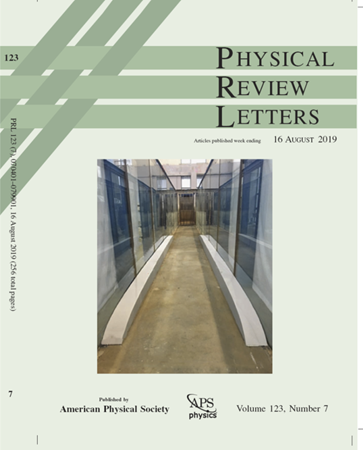四端Nb-Pt-Nb Josephson结阵列的受挫挫折
IF 9
1区 物理与天体物理
Q1 PHYSICS, MULTIDISCIPLINARY
引用次数: 0
摘要
我们研究了用自制的Nb-Pt-Nb四端Josephson结的方形晶格的受挫模式。四端几何结构产生了交替通量f, f ‘穿过斑块的棋盘图案,由于整数通量和f+f ’不等重分配到交替斑块,即使在每个斑块的非理性通量量子下,也能稳定berezinski - kosterlitz - thouless跃变。这种类型的挫折表现为直流电阻的跳动模式,在电阻低谷的状态配置在传统的零通量和半通量状态之间逐渐变化。因此,四端Josephson结阵列提供了一个有希望的平台来研究以前未被探索的通量和涡构型,并提供了对四端Josephson结中心弱链接区域空间扩展的估计。本文章由计算机程序翻译,如有差异,请以英文原文为准。
Frustrated Frustration of Arrays with Four-Terminal Nb-Pt-Nb Josephson Junctions
We study the frustration pattern of a square lattice with fabricated Nb-Pt-Nb four-terminal Josephson junctions. The four-terminal geometry gives rise to a checkerboard pattern of alternating fluxes f, f ′ f + f ′
求助全文
通过发布文献求助,成功后即可免费获取论文全文。
去求助
来源期刊

Physical review letters
物理-物理:综合
CiteScore
16.50
自引率
7.00%
发文量
2673
审稿时长
2.2 months
期刊介绍:
Physical review letters(PRL)covers the full range of applied, fundamental, and interdisciplinary physics research topics:
General physics, including statistical and quantum mechanics and quantum information
Gravitation, astrophysics, and cosmology
Elementary particles and fields
Nuclear physics
Atomic, molecular, and optical physics
Nonlinear dynamics, fluid dynamics, and classical optics
Plasma and beam physics
Condensed matter and materials physics
Polymers, soft matter, biological, climate and interdisciplinary physics, including networks
 求助内容:
求助内容: 应助结果提醒方式:
应助结果提醒方式:


